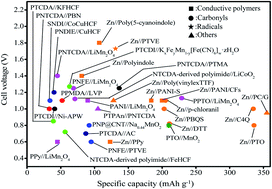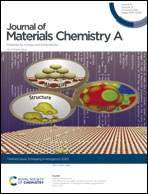The rise of aqueous rechargeable batteries with organic electrode materials
Abstract
Aqueous rechargeable batteries (ARBs), with improved safety, environmental benignity, and affordability, are very appealing for portable electronics and grid-scale applications. Electrode materials play a critical role in achieving high energy and long cycle life of aqueous batteries. In the context of materials development, organic electrode materials show advantages of sustainability, high electroactivity, design flexibility and low limitation of cationic radius, and are thus highly competitive to inorganic based materials. This review aims to provide timely access to state-of-the-art advances of organic electrode materials in ARBs. Firstly, organic electrode materials are categorized to provide an overview of their respective charge storage mechanisms and characteristics. Then, a comprehensive understanding of the progress of organic electrode materials in various ARBs is provided, including aqueous Li+, Na+, K+, Zn2+, Mg2+, Ca2+, H3O+, and NH4+ ion batteries. The conductivity and dissolution issues governing their electrochemical performance in ARBs are discussed. Strategies to enhance the electrochemical performance of organic electrode materials are summarized, including polymerization, molecular engineering, hybridization with conductive substrates, electrolyte/separator optimization, etc. Finally, the critical challenges and future research directions for the development of organic electrode materials and their application in ARBs are provided.

- This article is part of the themed collection: Journal of Materials Chemistry A Emerging Investigators


 Please wait while we load your content...
Please wait while we load your content...